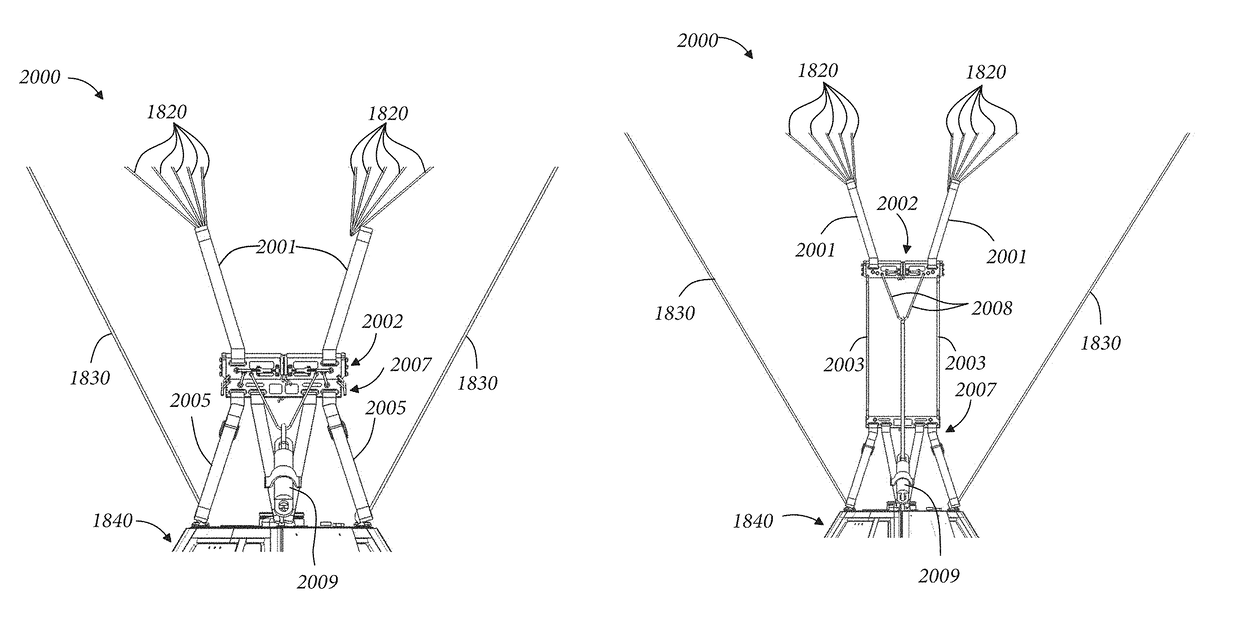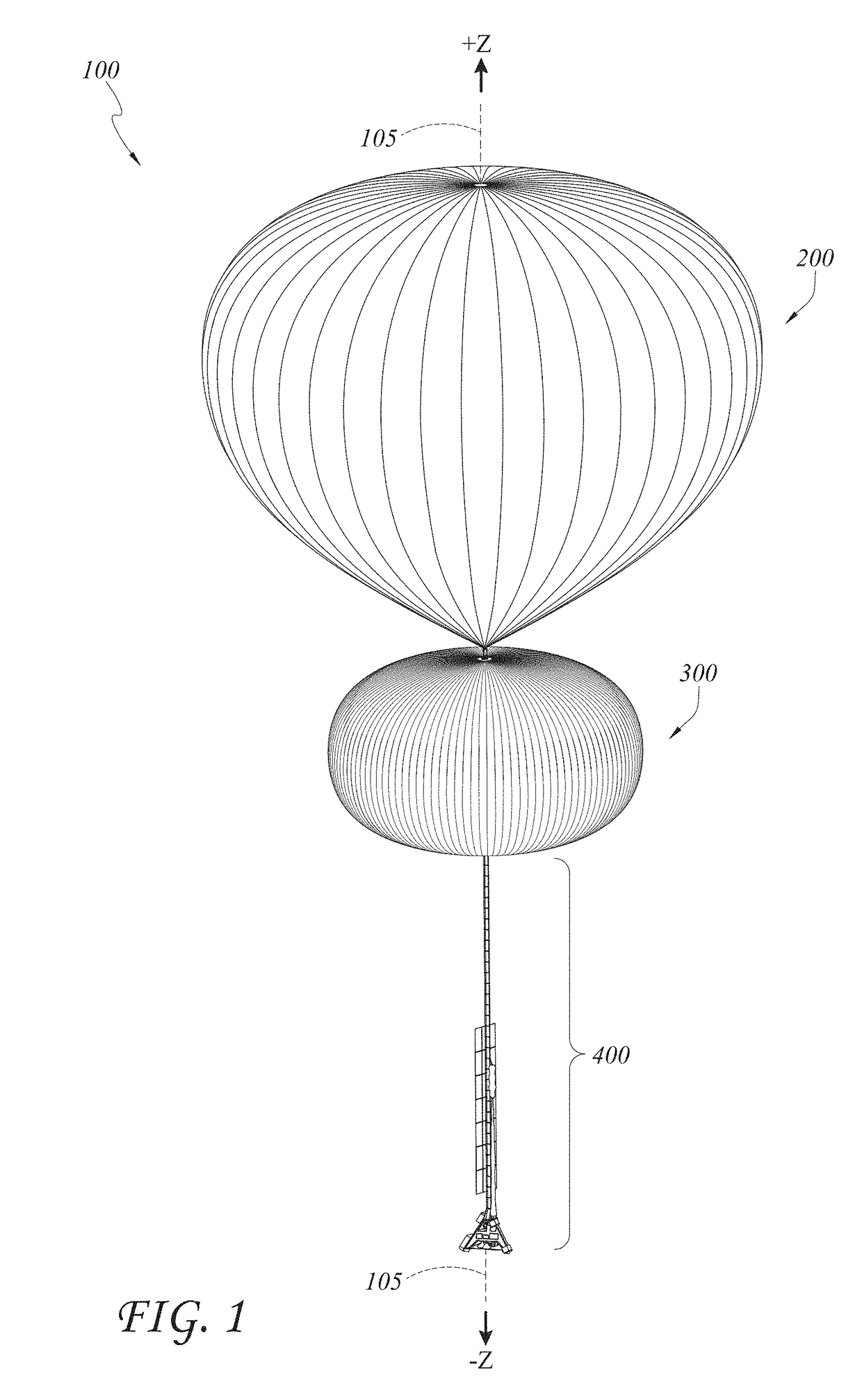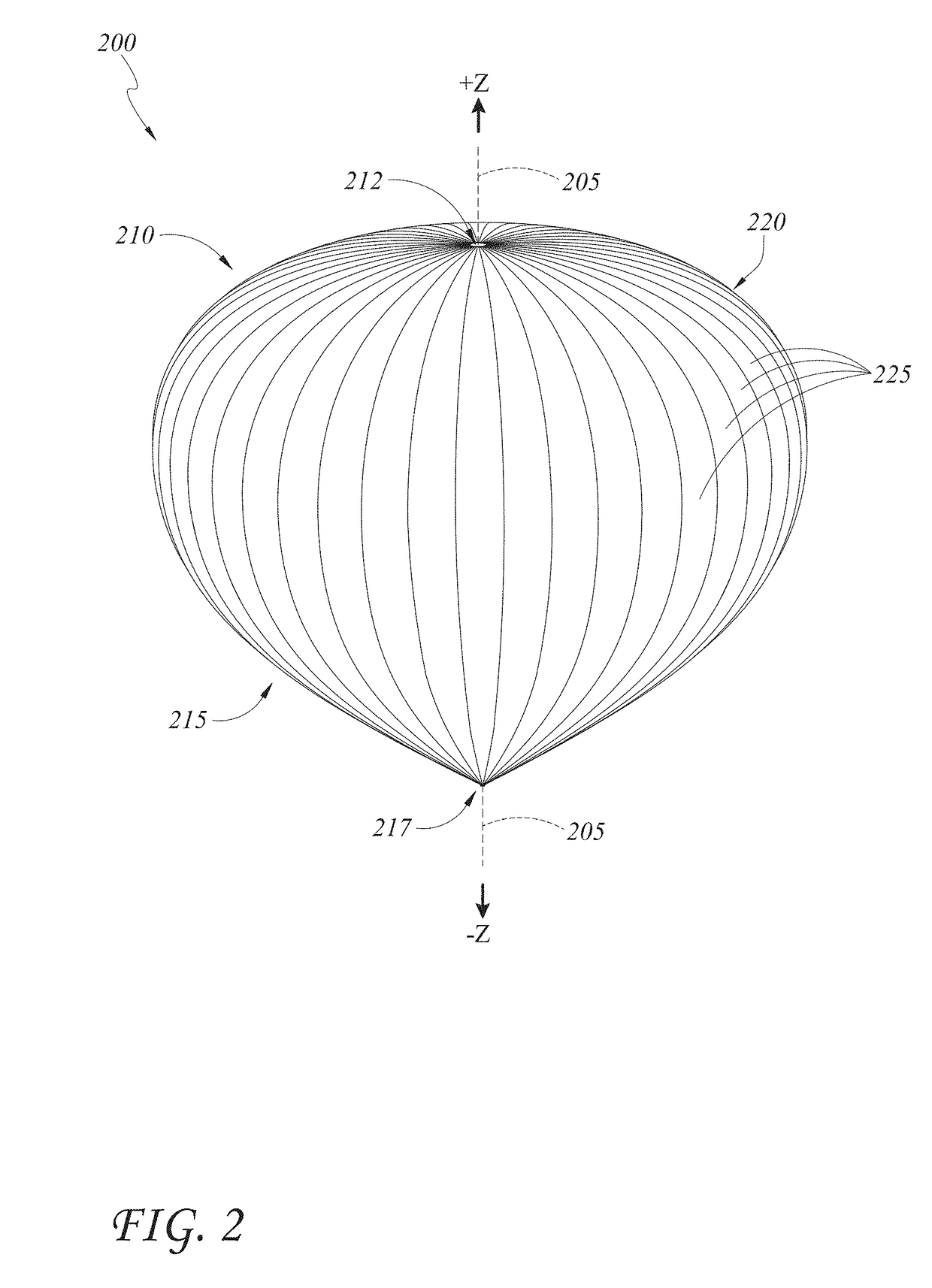[0006]Various embodiments of the technology generally relate to systems to slow the landing of a descent system, such as a parafoil, and / or decrease the landing speeds of payloads delivered by the descent system. Decreasing the landing speeds of descent systems could greatly reduce landing loads and enable the delivery of more sensitive payloads.
[0008]The riser release system may be used with an LTA system, such as a tandem balloon system. A zero-pressure balloon (ZPB) is attached in tandem with a variable air super-pressure balloon (SPB). The ZPB provides lift for the system while the SPB provides a variable amount of ballast by pumping in or expelling out ambient air. By dividing the two functions among the two separate balloons, each balloon and its associated accessories are configured for the respective balloon's particular function, allowing achievement of advanced performance targets with the LTA. For instance, a compressor provides air to the SPB and can be configured for providing a sufficient rate and volume of air at particular high altitudes in which the LTA system will be flown. Such compressor designs allow for rapid descent, as well as high pressures within the SPB which allows for rapid venting and ascent, both of which can be performed at high altitudes. As further example, configurations of the SPB skin and accompanying tendons allow for a structurally efficient and stable SPB. For instance, the SPB may be configured to assume a “pumpkin” shape during flight capable of withstanding very large internal pressures, while also providing stability to prevent issues such as deformation of the skin, including “S-clefting.” These and other features of the LTA system provide the ability to both simultaneously achieve high altitude (e.g. at or above about 50,000 feet) and actively control altitude over a meaningful range (e.g. more than about 20,000 feet).
[0009]These and other features provide an LTA platform that can be scaled and configured simply for various missions and flight requirements and with safe delivery and landing of a payload using the riser release system. For instance, the basic design of the LTA system can be configured for higher altitude and / or heavy lift missions with a higher capacity multi-stage compressor and larger volume SPB and ZPB. As further example, the LTA system can be configured for lower altitude and / or smaller payload missions with a lighter weight system, for example with a single stage compressor and smaller volume SPB and ZPB. These and other features of the LTA systems described herein allow for performing advanced maneuvers at high altitude with a scalable platform. Thus, further described herein are associated methods of navigation and control with these LTA systems. The riser release systems and methods described herein may be used with any of these example LTA systems, or other systems, as mentioned.
[0010]In one aspect, a riser release system for controllably landing a descending flight vehicle is described. The flight vehicle has a payload suspended underneath a parafoil canopy. The riser release system comprises one or more control lines, one or more riser lines, and a release control device. The one or more control lines have a first end fixedly connected with the canopy and a second end fixedly connected with the payload. The one or more riser lines have a first end fixedly connected with the canopy and a second end releasably connected with the payload. The release control device is coupled with the second ends of the one or more riser lines and with the payload, and the release control device is configured to control a distance the second ends of the one or more riser lines travel from the payload after the second ends are released. The release of the second ends of the one or more riser lines allows the payload to drop away from the riser lines and increases a downward load from the payload on the one or more control lines, thereby causing the canopy to flare and a descent rate of the flight vehicle to decrease.
[0021]In another aspect, a riser release system for a flight vehicle having a payload and a canopy is described. The riser release system comprises a plurality of lines and a release control device. The plurality of lines is coupled with the canopy and the payload. The control device is coupled with one or more of the plurality of lines and with the payload and is configured to control a distance that the one or more of the plurality of lines travels after the one or more of the plurality of lines are released from the payload. The release of the one or more of the plurality of lines increases a downward load from the payload on one or more unreleased lines of the plurality of lines, thereby causing the canopy to flare and a descent rate of the flight vehicle to decrease.
 Login to View More
Login to View More  Login to View More
Login to View More 


